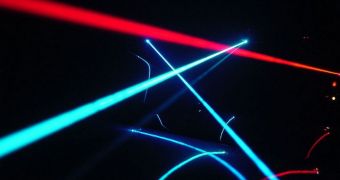For the better part of the last 20 years, University of Colorado in Boulder (UCB) physics professors Margaret Murnane and Henry Kapteyn have been inching towards creating a tabletop X-ray laser at a snail's pace. As the old adagio goes, slowly but surely, they managed to set a very solid foundation for their work, which culminated with a new breakthrough, achieved at the Joint Institute for Laboratory Astrophysics (JILA), which brought the goal of building the advanced device closer than ever.
JILA is a joint institute of UCB and the US National Institute of Standards and Technology (NIST), and is generally considered to be one of the leading research facilities in physics in the United States. One of its primary goals over the past couple of decades has been building a tabletop X-ray laser of reasonable dimensions and low costs, in other words a device that could revolutionize science while remaining accessible to research groups with limited possibilities. This type of machinery could open the way to high-resolution imaging that now seems impossible, to viewing the inner workings of single cells, and also the window to understanding the nanoscale world better than ever before.
“Our goal is to create a laser beam that contains a broad range of X-ray wavelengths all at once that can be focused both in time and space. If we have this source of coherent light that spans a huge region of the electromagnetic spectrum, we would be able to make the highest resolution light-based tabletop microscope in existence that could capture images in 3D and tell us exactly what we are looking at. We're very close,” says Murnane. The recent innovation was presented in San Diego, at the annual meeting of the American Association for the Advancement of Science (AAAS). The panel discussion was entitled “Next Generation of Extreme Optical Tools and Applications.”
“If we can do this, it could lead to all kinds of possibilities. It might make it possible to improve X-ray imaging resolution at your doctor's office by a thousand times. The X-rays we get in the hospital now are limited. For example, they can't detect really small cancers because the X-ray source in your doctor's office is more like a light bulb, not a laser. If you had a bright, focused laser-like X-ray beam, you could image with far higher resolution,” Kapteyn adds.

 14 DAY TRIAL //
14 DAY TRIAL //